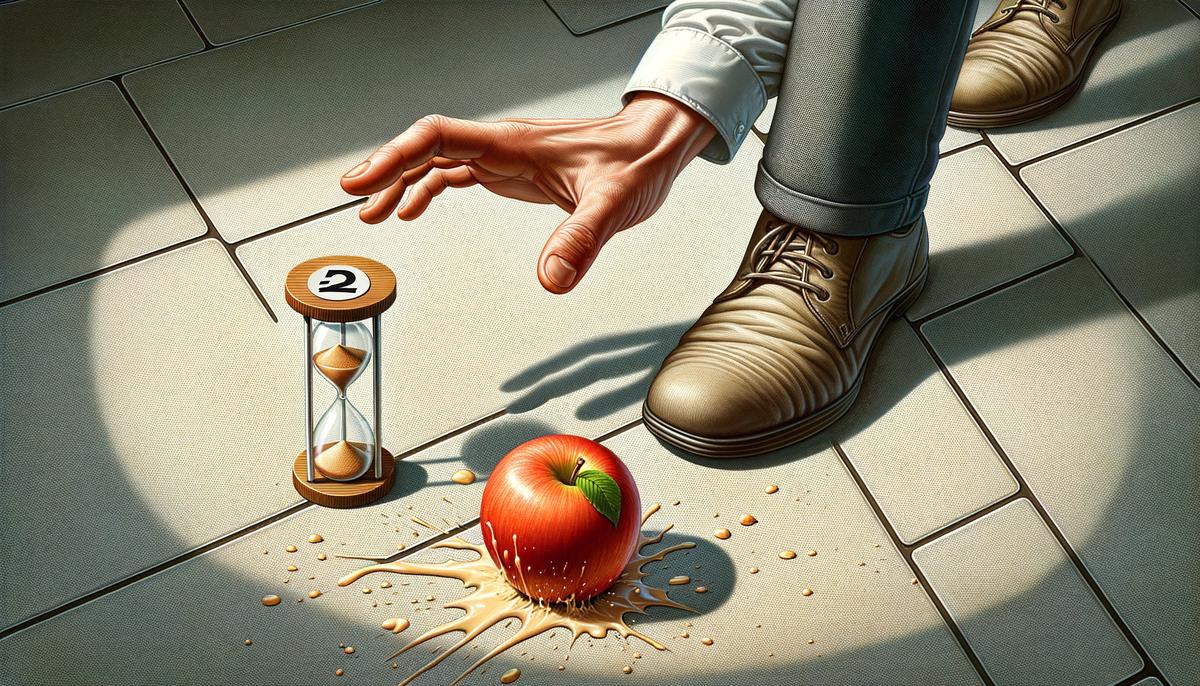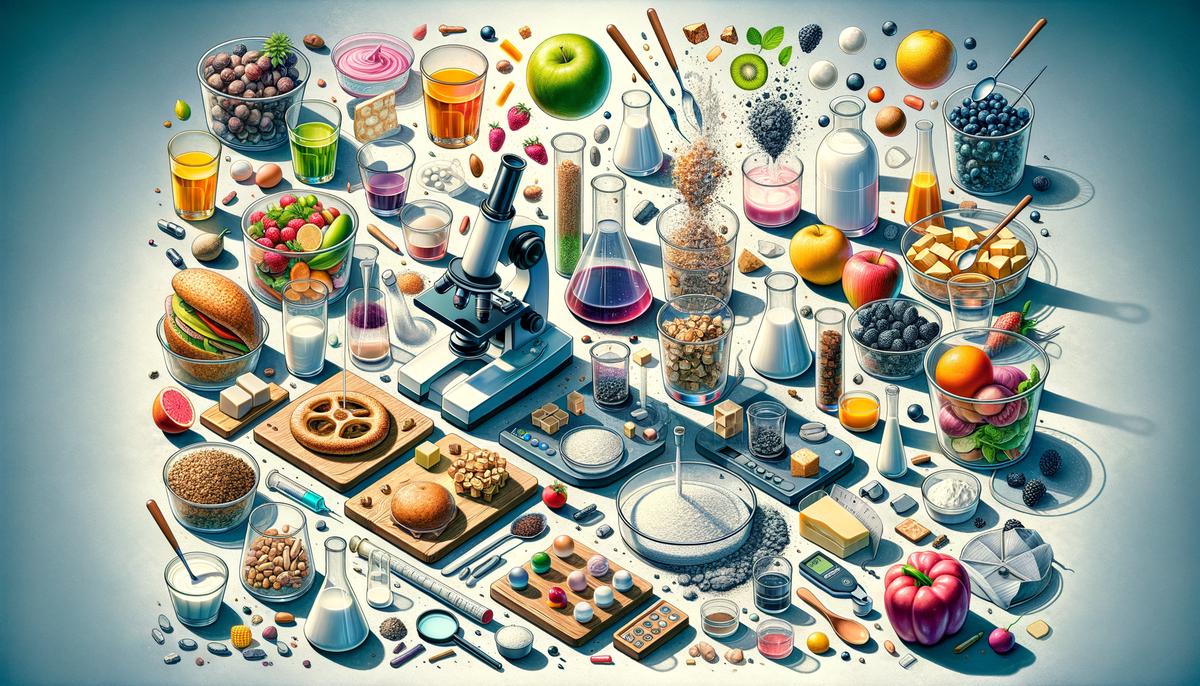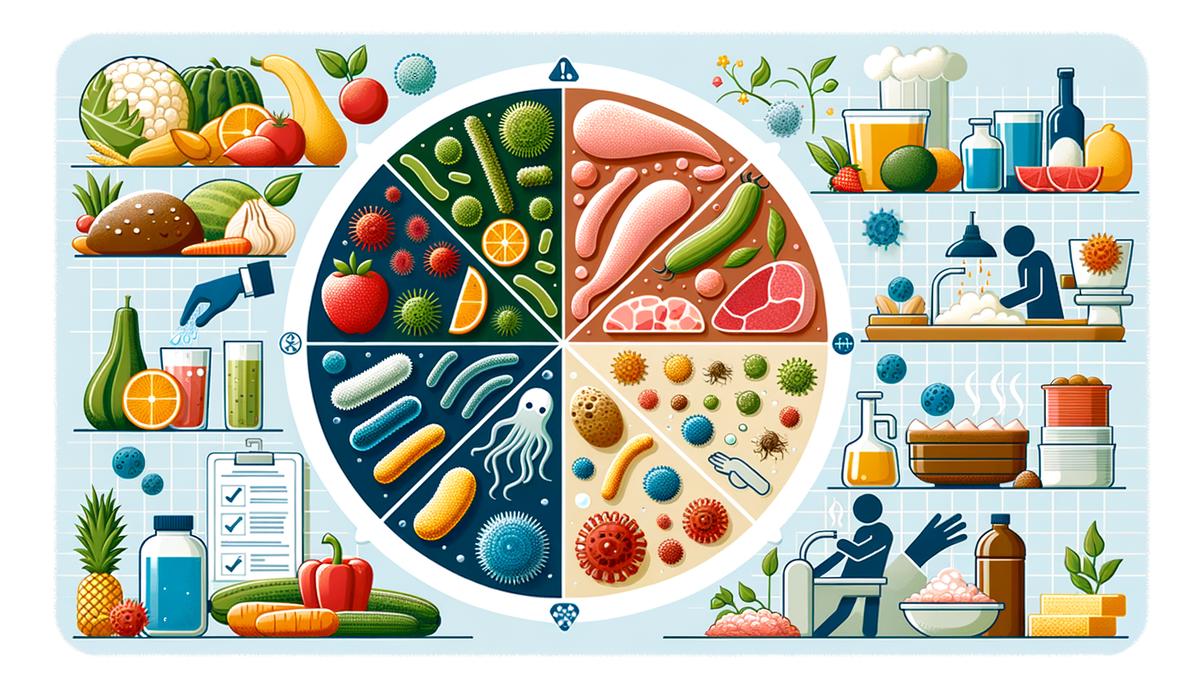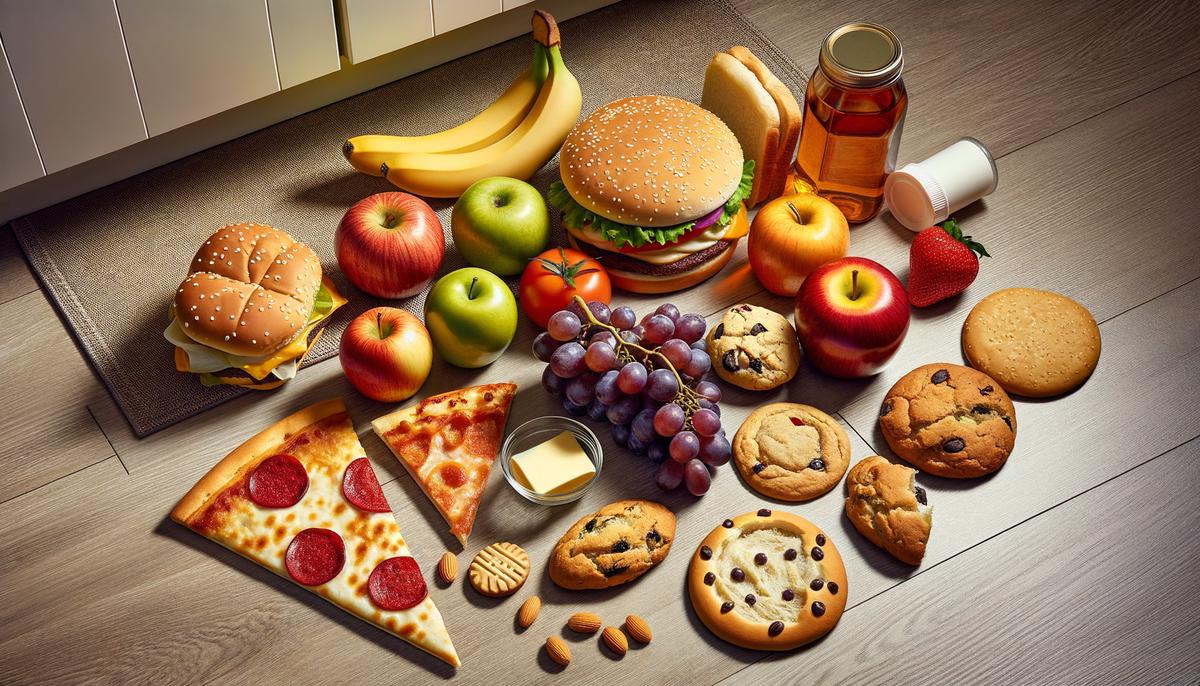The five-second rule is a concept that has intrigued many, from those casually dropping a piece of candy to scientists in lab coats. This article explores the fascinating intersection where folklore meets science, shedding light on what happens when food meets floor. Through examining various studies and expert opinions, we aim to provide a comprehensive understanding of this rule that has found its way into households around the globe.
Understanding the Five-Second Rule
The five-second rule is a widely believed idea suggesting that if you drop food on the floor, it’s okay to eat it if you pick it up within five seconds. Though it might sound like a modern internet myth, the origins of this rule are a bit murky, with various cultures having similar sayings for a long time.
Let’s get to the heart of this rule. At its core, the five-second rule posits that bacteria and other germs need time to jump onto dropped food. Hence, if you’re quick enough, you could theoretically avoid contaminating your snack. However, researchers and food safety experts have tested this theory, and their findings challenge the safety of following this rule.
The scientific community’s interest in legitimizing or debunking the five-second rule has led to several studies. One notable investigation was conducted by Jillian Clarke during a high school internship at the University of Illinois. Clarke and her team discovered that bacteria could attach to food almost instantly after contact with the floor. Despite this, the study also reflected public curiosity and belief in the rule, highlighting how widespread the concept has become.
Additional research has explored various factors that might influence the transfer of bacteria from surface to food, such as the type of food, surface conditions, and how long the food was in contact with the floor. Findings consistently show that while the transfer of germs can vary, it’s generally unwise to eat food dropped on the floor, regardless of the time it spends there.
Despite scientific evidence pointing against the practicality of the five-second rule, it persists, illustrating the charming blend of myth and fact in cultural beliefs. It’s a rule taught to children and passed among adults, often with a wink or a smile, acknowledging its dubious foundation but appreciating its appeal to our disdain for wasting food.
In understanding the origin and continued popularity of the five-second rule, one can see how folklore, science, and personal comfort with risk intertwine. It serves as a playful reminder of our relationship with food, cleanliness, and maybe just a bit of wishful thinking about not letting that cookie go to waste.

Scientific Investigations into the Five-Second Rule
Moving beyond the foundational overview, it’s crucial to understand that scientific curiosity didn’t stop with initial investigations. Various studies have continued to delve into the mechanics and nuances of the five-second rule, offering a broader scope of understanding than ever before.
A key study that often comes into the conversation was conducted by a team of researchers at Rutgers University in 2016. Led by Donald Schaffner, a specialist in food science, the team designed experiments to test the five-second rule across multiple food types, surfaces, and contact durations. Their research, published in the journal “Applied and Environmental Microbiology,” covers a wide array of foods including watermelon, bread, bread with butter, and gummy candy, all tested against different surfaces like stainless steel, ceramic tile, wood, and carpet.
Schaffner’s team intricately analyzed how factors like the moisture content of food and the nature of the surface impact bacterial transfer. Unsurprisingly, they discovered that moisture plays a significant role: watermelon, being very moist, picked up bacteria far quicker and in much larger amounts than the other food items. Conversely, gummy candy, which had the least moisture, showed less bacterial transfer.
The surface texture also made a difference. Surprisingly, carpet transferred fewer bacteria compared to tile and stainless steel, challenging preconceived notions about which surfaces might be cleaner. Time of contact, varying from less than one second to over five seconds, showed an expected trend: the longer the food was in contact with a contaminated surface, the more bacteria were transferred. However, even at the quickest contact durations, some transfer was always evident.
Another fascinating aspect uncovered was the virulence — or severity — of bacteria that might transfer within that crucial window. Not all bacteria are created equal, and some types capable of making people sick can latch onto food almost instantaneously. This complexity adds a layer of depth to the conversation that goes beyond a mere time-based rule; it speaks to the nature of the bacteria themselves.
This study by Rutgers University wasn’t just about debunking or verifying the five-second rule; it provided a comprehensive look at the myriad factors influencing bacterial transfer. It highlighted that decision-making around eating dropped food shouldn’t be distilled into a simple time-based rule but rather considered through the lens of what’s known about bacterial behavior and environmental factors.
Yet another study switching focus slightly was conducted by researchers at Aston University in the UK. Published in 2014, this investigation had similar aims but put additional emphasis on the type of floor—exploring the bacterial transfer on indoor versus outdoor surfaces, and introducing new variables like the type of bacteria and humidity levels.
In light of these scientific endeavors, it becomes evident that while the five-second rule might persist in cultural conversations and personal habits, the actual decision to eat food off the floor should be informed by an understanding of the conditions rather than a fixed time limit. Factors such as food moisture, floor material, types of bacteria present, and even room humidity play critical roles in the risk associated with consuming dropped food items.
Through examining these thoughtful and well-structured studies, individuals are equipped with more precise knowledge to navigate the everyday encounters with food spills, armed not just with folklore but with insights grounded in scientific research.

Factors Influencing Bacterial Transfer
Now, diving further into the factors influencing bacterial transfer, one critical aspect not widely discussed outside academic circles is the type of food involved. Certain kinds of food, due to their composition, are more susceptible to bacteria adhesion. For example, wet or sticky foods, like a slice of watermelon or a piece of candy, are more likely to pick up bacteria from surfaces compared to dry, hard foods like a cracker. This variance adds another layer to understanding the complexities of bacterial transfer and disputes the one-size-fits-all nature of the five-second rule.
Another dimension worth exploring is the specific species of bacteria present on the surface. Not all bacteria have the same capacity or likelihood to transfer to food. Some bacteria, due to their physical characteristics or survival strategies, may adhere to surfaces more tenaciously or have better survival rates once transferred onto food. Therefore, the risk associated with eating dropped food may also depend heavily on the bacterial inhabitants residing on the specific surface the food encounters.
Environment plays a significant role as well. Temperature and humidity conditions can affect both the survivability of bacteria on surfaces and their ability to transfer and thrive on food items. Warmer conditions with higher humidity can create ideal breeding grounds for bacteria, thereby increasing the risk of contamination when food contacts these surfaces.
The human factor cannot be discounted either. Human behaviors and practices, such as regular cleaning and sanitizing of surfaces, directly impact the concentration and types of bacteria found on those surfaces. A kitchen counter regularly wiped down with disinfectant is less likely to harbor harmful bacteria compared to one that is cleaned less frequently. This demonstrates that personal habits and cleanliness levels significantly contribute to the risk of bacterial transfer from surfaces to food.
Lastly, the overall condition of the food before it drops also matters. Pre-damaged or partially eaten foods have exposed surfaces that may be more vulnerable to bacterial adhesion compared to intact, sealed or packaged items. This suggests that the state of the food at the time it makes contact with a surface could influence the level of bacterial contamination it incurs.
In conclusion, while the simplicity of the five-second rule offers comfort and a quick decision-making tool, the reality of bacterial transfer is governed by various factors, including food type, bacteria species, environmental conditions, human behavior, and the state of the food itself. Appreciating these complexities aids in making more informed decisions about the safety of consuming dropped food, guiding us to look beyond simple rules and delve into a more nuanced understanding of food safety and hygiene.

Expert Opinions on the Five-Second Rule
Turning our lens onto experts’ perspectives unearths illuminating insights regarding the safety and validity of the five-second rule. Scientists delve into nuanced territories, emphasizing the pivotal role of personal health and immune system strength. Dr. Paul Dawson, a seasoned researcher on the subject, articulates that the overall immune health of an individual significantly sways the potential repercussions of adhering to the five-second rule. Healthy adults with robust immune systems might face fewer risks when occasionally practicing this rule, yet the scenario alters for individuals with compromised immunity.
Experts consistently underscore sanitization habits as another determinant in the risk equation. Regularly cleaned and maintained surfaces, though not entirely devoid of microbial residents, present arguably lesser hazards. However, detailed studies indicate that certain pathogens capable of causing serious illnesses can survive on surfaces for extended durations. Dr. Donald Schaffner, a professor and extension specialist in food science, points to E.coli and Salmonella, noting their resilience and potency in causing health adversities.
In an era where quick internet searches often replace rigorous inquiry, myths about the safety of the five-second rule flourish. Yet, amidst this sprawl of information, scientific voices urge for a discerning approach. They advocate for erring on the side of caution, particularly in environments like kitchens and dining areas where food is prepared and consumed. This call aligns with universal principles of food safety, prioritizing preventive measures over rectifying consequences.
Dialogues with experts reveal a consensus: the five-second rule doesn’t possess a universal applicability nor does it guarantee safety from bacterial contamination. The decision to eat food dropped on the ground morphs into a more complex assessment, involving surface cleanliness, individual health status, and environmental conditions. It’s illuminated that adhering rigidly to this rule overlooks a constellation of factors pivotal for ensuring food safety.
The enduring fascination with the five-second rule reflects more than just a quirky inquiry into food safety; it mirrors our collective quest for understanding the invisible microbial world with which we coexist. Continuing education and awareness spearheaded by experts serves as a bridge, guiding societal views from folklore-inspired practices to informed decision-making founded on scientific evidence.
In digesting this convergence of perspectives, one unmistakably grasps the intertwined essence of science and cultural practices. While the five-second rule embodies a slice of cultural lore intertwined with our interactions with food, the beckoning of scientific scrutiny enriches our comprehension, nudging toward practices that align with well-informed understandings of hygienic safety and health.

Public Perception and Behavior
Given the detailed examination of how the five-second rule has been assessed through scientific lens, and noting its omnipresence in popular culture, another dimension to explore is the wide variance in public acceptance and skepticism towards this age-old adage. People’s adherence to the rule doesn’t just stem from a belief in its scientific validity, which, as covered, is highly questionable, but also from an ingrained societal habit and psychological comfort it offers. This variance greatly influences whether or not individuals decide to eat food that has fallen on the ground, showcasing an interesting nexus between knowledge, belief, and behavior.
At its core, public perception of the five-second rule is as much about food waste prevention as it is about risk evaluation. In households around the world, throwing away perfectly “good” food simply because it made brief contact with the floor is often seen as wasteful. This sentiment resonates strongly in communities where food scarcity and sustainability are prevailing concerns. However, what appears to be a straightforward decision, grounded in the desire not to waste, is, in reality, a complex risk assessment heavily influenced by one’s understanding (or lack thereof) of microbial risks.
Furthermore, the appeal of the five-second rule extends beyond mere risk analysis—it encapsulates a challenge to authority and the thrill of flirting with danger. This phenomenon can be likened to childhood games where boundaries are tested, but within a perceived safe space. Invoking the rule often triggers laughter and light-heartedness, serving as a form of social bonding. Nevertheless, underpinning these seemingly innocuous instances of invoking the rule are deeply ingrained beliefs about cleanliness, health, and respect for food, shaping how risks are calculated and acted upon.
The rule also reflects broader cultural attitudes toward hygiene and cleanliness, with marked differences observed across various societies. In some cultures, where cleanliness is deeply embedded in daily rituals and food preparation, adhering to the five-second rule might be less common. Conversely, in settings where less rigorous sanitation standards are the norm, invoking the rule might not only be more prevalent but also less scrutinized.
In the realm of public health education, the persistent popularity of the five-second rule, despite scientific rebuttals, underscores the challenge of changing deeply held beliefs and practices. It’s evidence that science communication needs to be paired with messages that resonate on an emotional and cultural level to effectively alter behaviors. Pushing for a nuanced understanding of germ theory and contamination risks must go hand in hand with respecting cultural practices and psychological predispositions.
Addressing this from a public policy perspective reveals another layer of complexity. Advocating for food safety involves striking a delicate balance between highlighting microbial dangers without unduly alarming the public. The target is to encourage prudent judgment without fostering germophobic behavior or excessive anxiety around food consumption.
Lastly, this divergence in perceptions and practices around the five-second rule showcases a broader societal dialogue about trust—trust in scientific authority vs. personal experience or traditional wisdom. Elevating the discourse requires acknowledging the factors at play, including the lure of simplicity in decision-making, the appeal of traditional knowledge, and the comfort found in shared communal practices. An effective approach involves opening channels for dialogue that acknowledge these elements while gently steering behaviors towards safer, evidence-based practices. Thus fostering an environment where informed decision-making prevails without overlooking the cultural and psychological dimensions that color human behavior.

Comparative Analysis of Global Food Safety Myths
Moving on from the intricate assessment of the five-second rule and its entrenched position within cultural and scientific discourse, it’s essential to consider how this rule aligns or diverges from other food safety myths that permeate societies around the globe. These parallels draw a vivid picture of our global effort to navigate the tricky landscape between tradition, common sense, and modern scientific understandings of hygiene and health.
One such myth is the widely held belief in different cultures that natural or organic foods are inherently free from harmful pathogens. This misconception parallels the false security some feel with the five-second rule, as it underscores a common underestimation of microbial resilience and ubiquity. Just as studies have debunked the safety of consuming food off the floor regardless of the time lapse, research similarly shows that organic foods can also harbor dangerous bacteria like E.coli, debunking the myth of their automatic safety.
Similarly, across various cultures, there’s a pervasive belief in specific traditional food preparation methods acting as safeguard against contamination. For instance, the practice of rinsing meats before cooking is believed by some to remove potential pathogens—an idea that shares a foundational logic with the five-second rule’s implied momentary safety. However, modern food safety research advises against such practices, noting that rinsing can actually spread bacteria through splashing, rather than eliminating it. This highlights a common theme in misunderstanding bacterial behavior and transfer, much like misconceptions surrounding the five-second rule.
Another globally recognized myth worth noting involves the use of spices as preservatives to extend the safety of dishes, particularly in warmer climates. This belief bears a semblance to the comfort found in the five-second rule, suggesting a reliance on traditional wisdom over scientific evidence. While certain spices have been identified for their antimicrobial properties, relying solely on them for food preservation, much like relying on a mere five seconds for safety, underestimates the complexity of foodborne pathogens and their capacity to pose health risks.
These global myths share a common thread with the five-second rule in showcasing how societal practices, beliefs, and instincts about food safety often clash with scientific findings. Each case underscores a human inclination to trust in longstanding habits or natural remedies, even in the face of contradictory evidence. Furthermore, these examples illuminate a broader narrative about our relationship with the microbial world—a relationship marked by a fine balance between caution and convenience, tradition and science.
Considering these parallels draws attention not just to the five-second rule but to a more extensive pattern of how humans comprehend and navigate risks related to food safety. It’s a reminder that beyond the specific facts of microbial transfer and food contamination lies a broader discourse about understanding, education, and change. As societies continue to evolve alongside scientific advancements, debunking myths and aligning practices with evidence remains an ongoing challenge, reflective of deep historical, cultural, and psychological dimensions driving human behavior and belief systems.

As we’ve explored the intricacies of the five-second rule through scientific lenses and cultural perspectives, it’s clear that our interactions with food are deeply nuanced. The decision to eat food off the floor involves more than just timing; it encompasses an array of factors including type of food, surface conditions, and our own health status. This discussion serves as a reminder of the importance of informed decision-making in our daily lives, encouraging us to weigh tradition against scientific evidence for safer eating habits.
Revolutionize your content with Writio, the ultimate AI writer! This article was crafted by Writio.
Leave a Reply